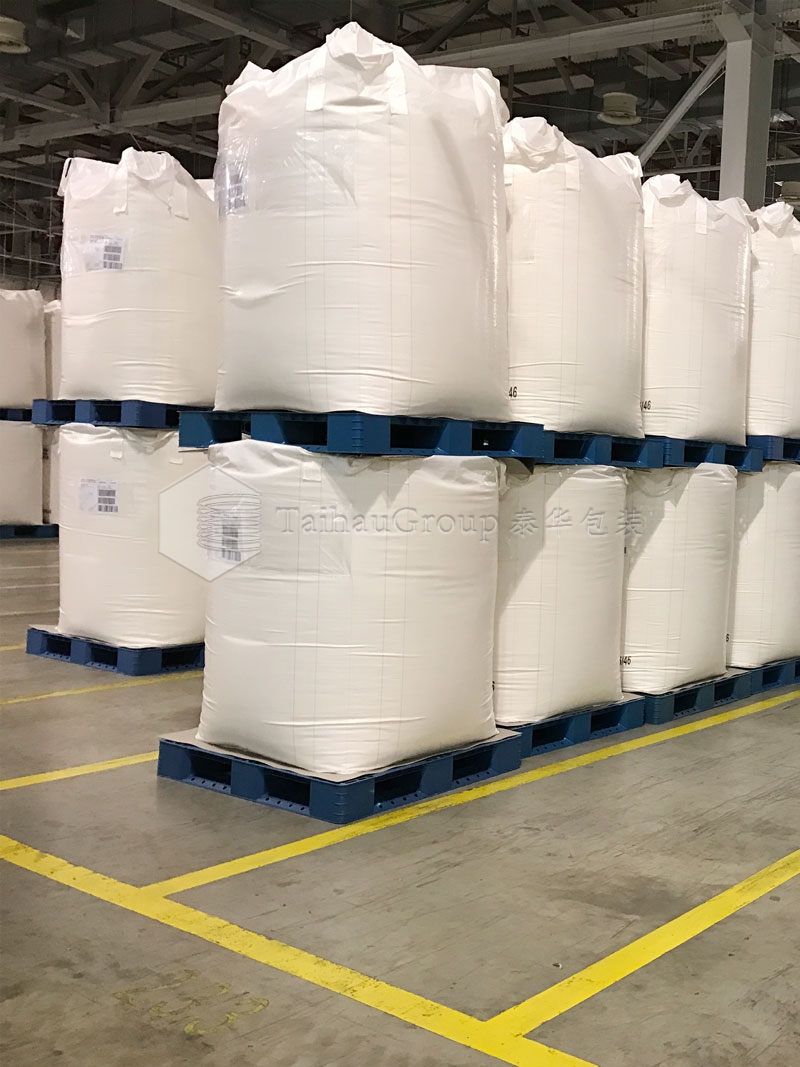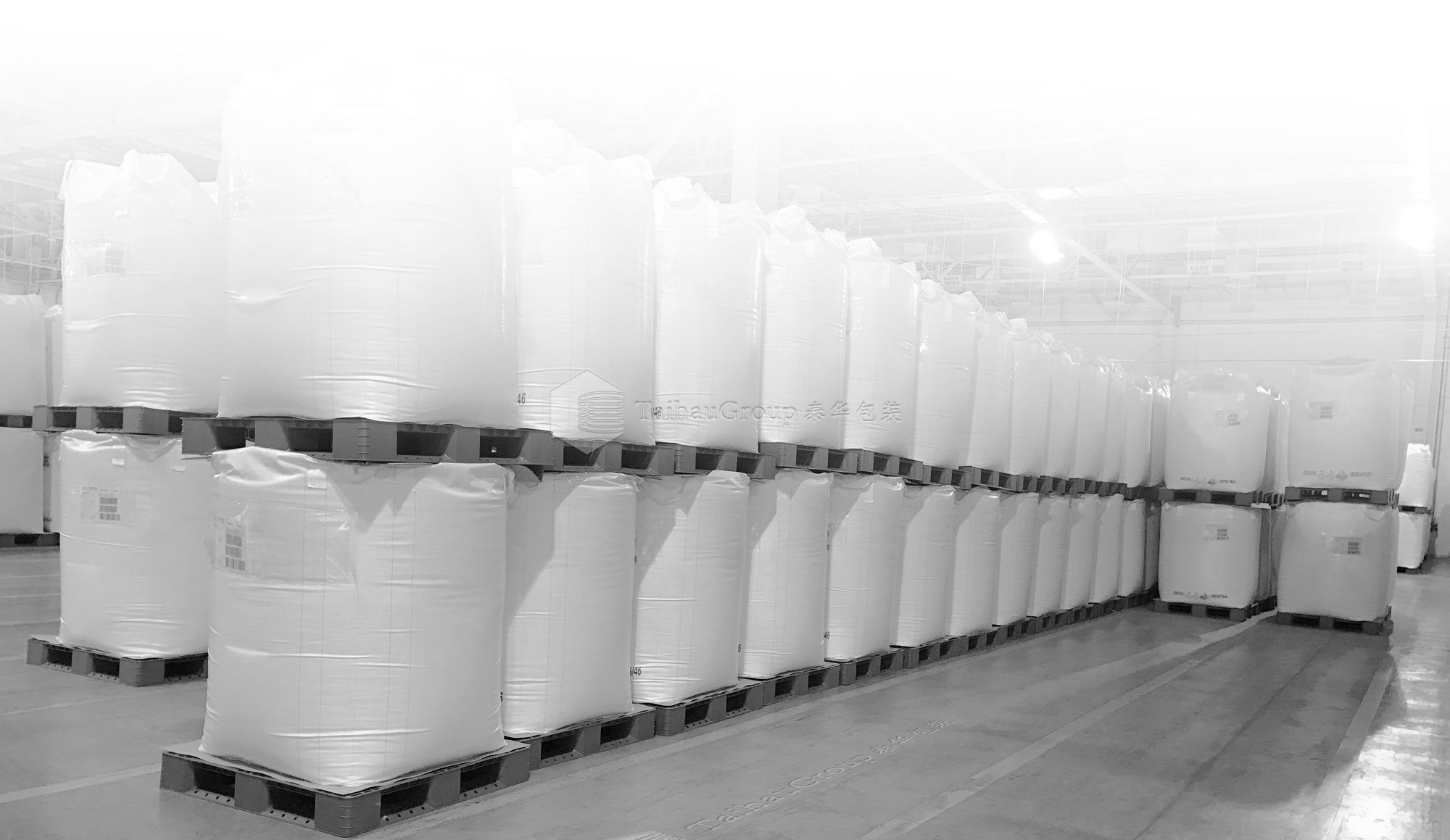FIBC, Full name is Flexible Intermediate Bulk Containers
 FIBC is commonly referred to as ton bags, ton bags, container bags, ton bags, space bags, space bags, flexible containers, mother and child bags, etc. It is a flexible container designed for transporting and storing bulk materials. Ton bags are favored for their moisture, dust, static electricity, radiation resistance, and high safety, while demonstrating sufficient strength and durability in their structure. FIBC ton bags are easy to load and unload, with high handling efficiency, and are generally made of polyester fiber materials such as polypropylene PP or polyethylene PE. FIBC ton bags are a multifunctional flexible container solution in modern logistics.
FIBC is commonly referred to as ton bags, ton bags, container bags, ton bags, space bags, space bags, flexible containers, mother and child bags, etc. It is a flexible container designed for transporting and storing bulk materials. Ton bags are favored for their moisture, dust, static electricity, radiation resistance, and high safety, while demonstrating sufficient strength and durability in their structure. FIBC ton bags are easy to load and unload, with high handling efficiency, and are generally made of polyester fiber materials such as polypropylene PP or polyethylene PE. FIBC ton bags are a multifunctional flexible container solution in modern logistics.
Overview of Characteristics of FIBC
1. Load capacity and capacity: The load capacity of the ton bag ranges from 0.3 tons to 3 tons, and the capacity ranges from 500 to 2300 liters. Different insurance factors can be designed according to demand (such as 3:1, 5:1, 6:1).
2. Type of goods: divided into bulk cargo ton bags and small packaged cargo ton bags, suitable for one-time use or multiple cycles of use.
3. Shape classification: The shapes of ton bags include circular, square, and U-shaped.
4. Lifting structure: Multiple lifting methods such as top lifting, side lifting, and bottom lifting are provided, and most designs include ton bag feeding ports and container bag discharging ports.
Shape classification and raw materials of FIBC
In the FIBC packaging industry, there are also two types classified by name: "Gold Diamond Container Bags" and "NLP Container Bags", mainly based on the use of raw materials, UV irradiation, and different tensile strengths. At present, the gold diamond container bag is a top product in the entire plastic woven bag industry.
1. Applicable types: reusable or disposable.
2. Shape: There are different options such as square, rectangular, circular, U-shaped, etc.
3. Lifting methods: including top lifting, side lifting, and bottom lifting.
4. Feed inlet: Optional with or without feed inlet (large opening/waterproof cover).
5. Discharge port: Optional with discharge port or without discharge port.
6. Raw materials: Mainly polypropylene (PP) is used.
7. According to their functions, they are divided into Type-A (ordinary container bags), Type-B (anti-static container bags), Type-C (conductive container bags), and Type-D (anti-static container bags).
FIBC code and shape classification
YF: Circular, with discharge port, not fully open
YQ: Circular, with discharge port, fully open
YW: Circular, without discharge outlet
FX: Square, box shaped
FB: Square, Semi Scattered
FQ: Square, fully dispersed
FIBC's manufacturing process
The production of FIBC ton bags began with polypropylene PP raw materials. Based on the customer's performance requirements for the bag body, it is decided whether a small amount of auxiliary materials need to be added, and plastic film is melted and extruded through an extruder. Subsequently, the film is cut into fibers and subjected to stretching and heat setting treatment to produce high-strength, low elongation PP raw fibers. These raw fibers are further processed through textile and film coating techniques to produce plastic woven fabric base, which is then sewn with accessories such as straps to ultimately produce FIBC ton bags.
Application areas of FIBC
Ton bags are widely used for loading, unloading, transportation, and storage of chemical raw materials, pharmaceutical raw materials, plastic raw materials, grains, starch, food additives, feed, cement, metallurgical powders, ore powders, refractory materials, and granular objects. Even for highly dangerous goods such as calcium carbide that are flammable and explosive when exposed to temperature, the ton bags for dangerous goods packaging are very convenient for the loading, unloading, transportation, and storage of calcium carbide, and pallet type container bags are more popular among people. FIBC ton bags provide special multi-layer composite material packaging solutions to ensure safe and efficient packaging needs.
FIBC International Quality Standards
In the international market, different regions have strict standards for the quality of FIBC ton bags. These standards have different priorities in terms of UV resistance, aging resistance and safety factor. The American and European markets have particularly strict requirements for these properties to ensure the reliability and durability of ton bags in various environments. As of now, the FIBC standards used in various regions are as follows (please refer to the latest version if there are any changes):
European standards: EN1898-2000 and EN277-1995 standards;
European Container Bag Association standard: EFIBCA standard;
British packaging standard: BS6382 standard;
Australian standard: AS3668-1989 standard;
Chinese standard: GB/T10454-2000 national standard (as of November 11, 2024, "code 20233291-T-46" is currently soliciting opinions, and the national standard plan "code 20233291-T-46" "Container Bags" is under the jurisdiction of TC49 [National Packaging Standardization Technical Committee], with the National Standards Committee as the competent department and the main drafting units including the China Packaging Federation).
Selection and design principles of FIBC (container bags, ton bags)
The design of container bags strictly follows the national standard GB/T10454-2000 (code 20233291-T-46 "is currently soliciting opinions on November 11, 2024). As an export packaging, container bags should ensure effective protection of the loaded goods during loading, unloading, transportation, and storage, and ensure the intact transportation and preservation of the goods. Therefore, the design of container bags must meet four key points, namely safety, storage, usability, and sealing.
1. Safety: mainly refers to the strength of the packaging bag.
When designing, it is necessary to consider the packaging volume, weight of the contents, and number of packaging units, as well as the distance of transportation and the number of handling times, and the choice of transportation vehicles and methods. In the national standard for container bags GB/T10454-2000 (code 20233291-T-46, currently soliciting opinions on November 11, 2024), strict technical specifications for the base fabric and sling of container bags are specified. From a safety perspective, it is clarified that all container bag structures are bottom suspended structures, and the safety factor must reach 1.8.
The safety factor is the ratio between the maximum bearing capacity of the product and the rated design load, which needs to pass the "lifting test". The lifting test mainly looks at whether there are any abnormal situations between the goods and the bag body, and whether the connection is damaged when several times the amount of goods are loaded in the container bag and repeatedly lifted. In similar standards both domestically and internationally, the safety factor is generally set at 5-6 times. Container bag products with a safety factor of 5 times can be safely used for a longer period of time. If anti UV additives are added, the application range of container bags will be wider, the service life will be longer, and they will have stronger competitiveness.
When the sling is connected to the bag body, there are various forms such as top suspension, bottom suspension, and side suspension, and they are connected by stitching, so stitching is also quite important. Relying solely on the high strength of the sling, the base fabric and stitching cannot achieve a certain level of strength, nor can they guarantee the overall high performance of the container bag.
2. Custody: Select the material ratio according to the usage conditions.
The anti-aging and anti ultraviolet abilities of plastic products exposed to the sun are the main problems in the actual use of container bags. Pay attention to the use of anti ultraviolet agents and the selection of raw materials in the production process according to the ratio of auxiliary materials selected according to the use of environmental conditions, product property requirements, etc.
3. Usability: Requirements for container bags in packaging products.
Full consideration should be given to the specific ways and methods of using container bags, such as lifting, transportation methods, loading material performance, etc. In addition, it is necessary to consider whether it is food packaging and whether it is non-toxic and harmless to the packaged food. The main requirements for cleanliness include whether the H13 air filtration (EN1822 standard) meets key indicators such as particle size<1 µ m and residual dust<0.001 mg/m ³.
4. Sealing: Different packaging materials require different sealing requirements.
Materials such as powders or toxic substances, items that are afraid of pollution, and items that isolate air have very strict requirements for sealing performance. Materials that are prone to moisture or mold also have special requirements for air tightness. When designing container bags, attention should be paid to the impact of base fabric coating and sewing processes on sealing. For example, lithium battery powder container bags in new energy material packaging have high requirements for air isolation.
Market price reference for FIBC (container bags, ton bags)
From the actual situation, the FIBC ton bag (container bag) price in China's container bag market is fiercely competitive. There are many ton bag supply companies, ranging from small workshops to large factories, with uneven product quality. The price range of container bags is large, with the lowest price being 8 yuan/ton bag and the highest price being 200 yuan/ton bag or more.
Under normal circumstances, the price quotation for container bags is:
The large factory will provide a packaging plan based on the actual needs of the user, and price the sample after production. The price of the container bag is generally quoted and settled according to the weight in kilograms (KG) of the container bag.


